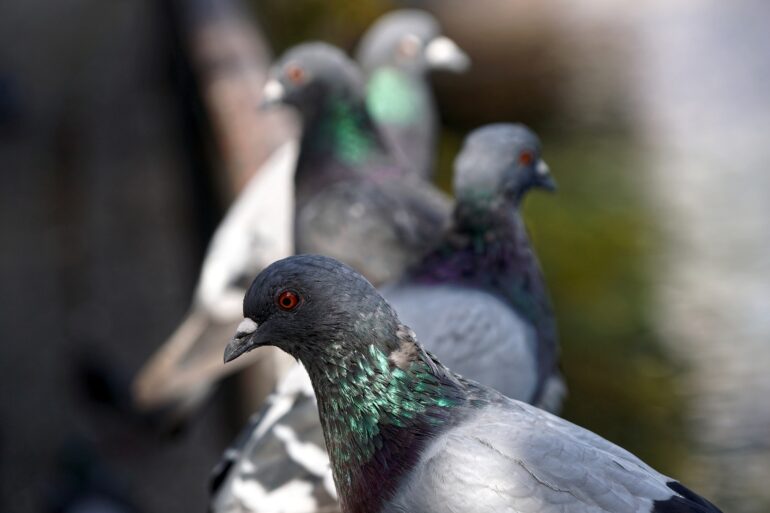TL;DR:
- Joint research by Ohio State University and the University of Iowa uncovers parallels between pigeon problem-solving and AI methods.
- Pigeons use a “brute force” approach similar to modern AI algorithms for categorization tasks.
- The experiment involved pigeons and AI systems categorizing visual stimuli, with both showing improvement over time.
- The study published in IScience highlights pigeons’ advanced cognitive abilities and reliance on associative learning.
- Pigeons excel in specific tasks without creating rules, in contrast to humans.
- Learning principles guiding AI systems align closely with pigeon problem-solving.
Main AI News:
Recent research conducted jointly by Ohio State University and the University of Iowa has uncovered intriguing parallels between pigeon problem-solving and the techniques employed by artificial intelligence (AI) systems. The findings indicate that pigeons rely on a “brute force” methodology akin to that seen in modern AI algorithms, as reported in a press release.
Brandon Turner, a prominent psychology professor at Ohio State, emphasized the study’s compelling results, stating, “We’ve discovered compelling evidence that the mechanisms underpinning pigeon learning closely align with the fundamental principles that govern contemporary machine learning and AI.”
The study involved presenting pigeons with various visual stimuli, including lines of differing widths, concentric rings, and sectioned rings, prompting the birds to categorize them by pecking either a left or right button. Successful categorization led to a reward, as detailed in the press release.
Remarkably, through a process of trial and error, the pigeons exhibited a notable improvement in their performance, transitioning from a 55% success rate to an impressive 95% accuracy rate in one of the simpler tasks, according to the release. Notably, similar tests conducted with AI systems yielded comparable results, showcasing the AI’s ability to refine its performance and reduce errors over time.
The comprehensive study, published in the esteemed journal IScience, underscores the pigeons’ advanced cognitive and attentional faculties, enabling them to proficiently tackle a diverse array of categorization tasks. Turner elaborated on these findings, highlighting that pigeons are naturally gifted learners, albeit without the ability to generalize information as humans do.
According to Turner, pigeons primarily employ associative learning—a mechanism that links two distinct elements, much like dogs associating sitting with receiving a treat. This form of learning was traditionally considered too rudimentary for tasks involving visual categorization. However, the research challenges this notion, demonstrating that pigeons excel in these specific areas through a trial-and-error-based, associative learning approach.
In contrast to humans, who often seek to establish rules to comprehend complex tasks, pigeons adopt a more direct strategy. As Turner elucidates, “Pigeons don’t try to make rules. They just use this brute force way of trial and error and associative learning, and in some specific types of tasks, that helps them perform better than humans.”
The study’s revelations suggest that the learning principles guiding AI systems closely align with the strategies naturally employed by pigeons. Turner concludes by noting the irony of human perception, stating, “We often celebrate our ingenuity in designing artificial intelligence while simultaneously underestimating the cognitive abilities of pigeons.“
Conclusion:
The study’s unexpected findings, demonstrating striking similarities between pigeon problem-solving and AI approaches, suggest a potential shift in how we perceive animal cognition. This insight may open doors for innovative problem-solving techniques inspired by nature in various industries, from robotics to AI development. Understanding the shared principles between pigeons and AI systems could lead to more efficient and effective learning algorithms, shaping the future of AI and machine learning applications in the business landscape.

